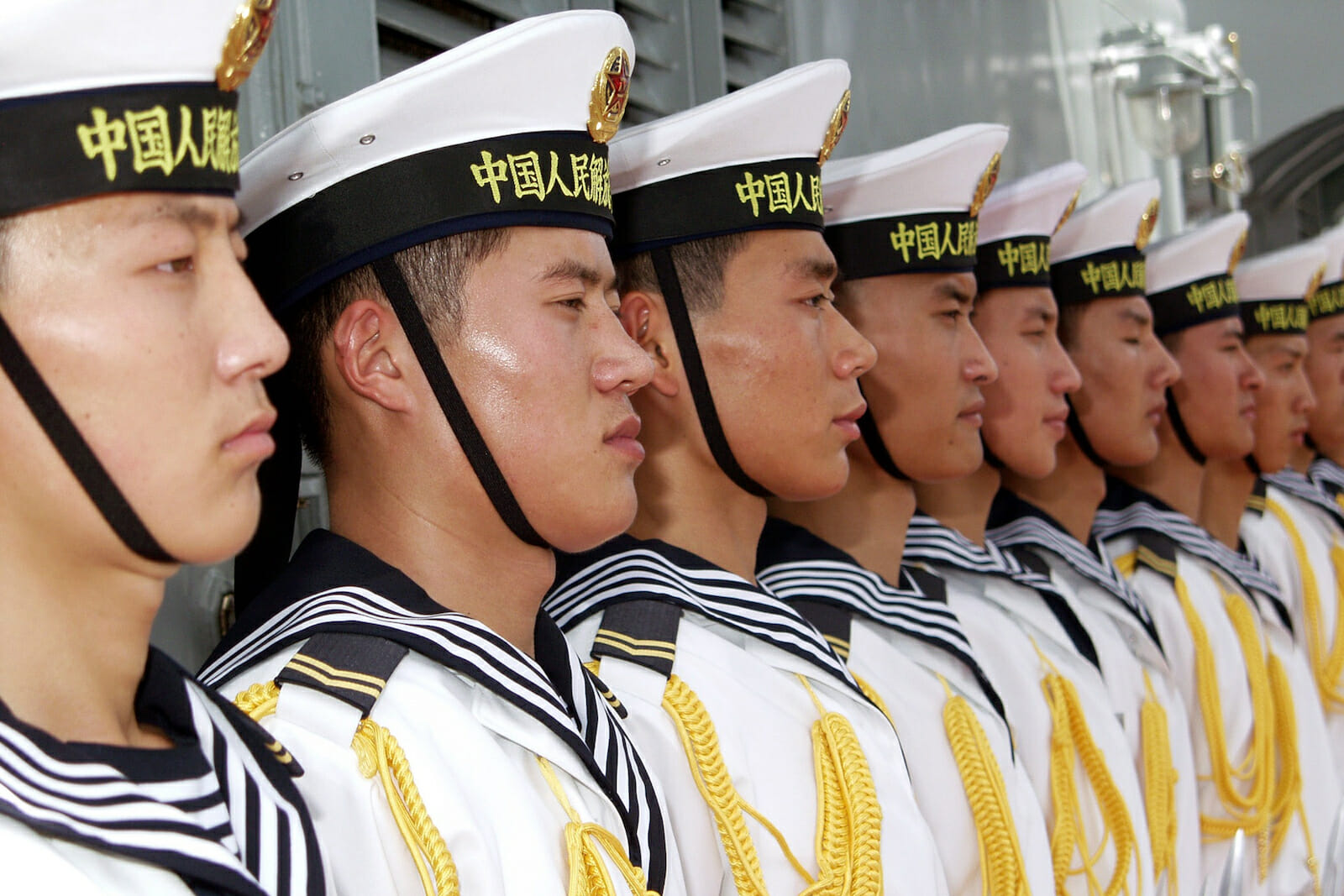
The Senkaku Islands Dispute
China has claimed that they were aware of the islands from the 15th century, and both China and Taiwan claim that the islands have been a part of Chinese territory since the 16th century. However, the Japanese claim that when the island was surveyed by them in the 1800’s, it was uninhabited and showed no signs of Chinese occupation. The Senkaku islands were subsequently incorporated into Japanese territory in 1895 after their victory in the First Sino-Japanese War. The islands briefly came under American occupation in 1945, when Japan surrendered at the end of World War II, but were soon returned in 1972.
Before 1971, neither China nor Taiwan made any claims to the “territorial sovereignty” of the Islands and neither government expressed any objection to Japanese sovereignty over the islands. In the late 1960s, the Bangkok-based Economic Commission for Asia and the Far East (ECAFE) surveyed the waters around the Senkaku and suggested potentially rich oil deposits beneath the seabed. After the ECAFE released its findings in 1971, Taiwan made its first territorial claim to the islands. Months later China followed suit.
China states that the Chinese first discovered and named the islands Diaoyu Dao. The earliest historical record of the names of Diaoyu Dao can be found in the book Voyage with a Tail Wind published in 1403. They also state that the waters surrounding these islands have traditionally been Chinese fishing grounds for generations. The government uses these historical records to justify Chinese sovereignty.
They also claim the islands were used by the Ming Dynasty as a coastal defence against Japanese pirates. The Chinese also assert that foreign and Chinese maps show that the islands belong to China.
China argues that Japan stole the islands during the First Sino-Japanese War. The government has recently pulled out the 1943 Cairo Declaration and the 1945 Potsdam Declaration as evidence, stating that by Japan agreeing to sign these documents, they agreed “to restore to the Republic of China all the territories Japan has stolen from the Qing Dynasty of China such as Manchuria, Formosa and the Pescadores.” There is however, no indication of the Senkaku Islands being mentioned in the documents.
They also believe that the agreements signed between the United States and Japan on the Senkaku islands are illegal and invalid and are a violation of China’s territorial sovereignty.
The Japanese government firmly states that the Senkaku islands are clearly an inherent territory of Japan. They refute China’s claims of historically administrating the islands through their surveys in 1885 which showed no signs of having been controlled by any state. Japan also does not validate the points raised by China for its sovereignty. They state that these islands were neither a part of Taiwan nor the Pescadores Islands, and were thus not renounced by the San Francisco Peace Treaty. Furthermore, the Senkaku Islands were included in the 1972 Okinawa Reversion Agreement between the United States and Japan where administrative rights were returned to Japan after American occupation.
In 2012, the government of Japan bought three of the Senkaku islands from a private Japanese owner to whom the islands had previously been leased to. This led to angry responses and anti-Japanese protests from the Chinese who felt that their sovereignty had been violated and saw the purchase as an act of nationalizing the islands.
Importance
The Senkaku Islands have great strategic and economic advantages. The islands are near important shipping lanes where large amounts of international trade transit. There are also fishing areas both sides view as important, as well as possible natural resources like oil, gas, and mineral deposits around the islands. The dispute about the overlapping of the demarcation of the exclusive economic zone (EEZ) by the United Nations Convention on the Law of the Sea (UNCLOS) is also an important factor that makes the Senkaku Islands so sought after.
Their location is also strategically important due to the rising competition between China, Japan, and the United States for military supremacy in the Asia-Pacific region. According to a scholar at the Chinese academy of social sciences, if Japan manages to force China to abandon its claims on the islands, the American – led Asia-Pacific order underpinned by the US-Japan alliance would undoubtedly be reaffirmed. On the other hand, if China successfully fulfils its sovereign claims over the islands, then the era of the United States dominating the Asia-Pacific maritime order will end on the spot.
What is China doing?
China has slowly and steadily been violating the islands boundaries by sending both military and fishing ships into the Senkaku waters, despite protests from the Japanese government. A number of incidents have taken place due to the presence of Chinese and Taiwanese fishing vessels in those zones claimed by Japan. Boats have collided and captains have been detained, but China does not seem to be slowing down on this front.
Ships and vessels from the Chinese and Taiwanese military forces have also entered the area including planes causing the Japan Air Self-Defence Forces to scramble their jets.
The Chinese also set up an Air Defence Identification Zone (ADIZ) in an area which encompasses the Senkaku Islands. This is seen as a measure to reinforce China’s territorial claim over the islands. China has also constructed gas drilling rigs near the contiguous zone median line.
All these steps taken by the Chinese have no doubt escalated the dispute over the Senkaku Islands. Their endeavour to achieve hegemony in the East and South China Sea has placed them in a precarious position, with ongoing disputes taking place with almost every country in the region. The recurring incursions by the Chinese are also in sync with forcing Japan to acknowledge the fact that there is a territorial dispute over the islands, and they are not under Japan’s control.
How it affects other countries
China’s aggressive stance is a matter of serious concern for Japan, Taiwan, and the United States. With China’s aim to dominate the East and South China Sea, the islands are extremely important in determining the maritime boundaries of China and Japan.
If China manages to successfully claim sovereignty over the Senkaku Islands, it could be hazardous for Japan. Apart from losing an economically important area that is rich in fish and potentially rich in oil and natural gas, there are many security concerns. Control over the islands by China will establish its hegemony over the East China Sea and military build-up on the islands could cause major problems. The Chinese could also use the islands to block trade routes.
The proximity of the islands to Taiwan would also prove dangerous as the two countries have been extremely hostile towards each other. Control of these islands could also potentially pave the way for an invasion of Taiwan by the Chinese who still denounce any declaration of an independent Taiwan, and maintains its claim over the country. Though Taiwan was initially only interested in maintaining fishing rights they had held in the waters around the Senkaku islands, the emerging security threat from China has bolstered their rights for territorial sovereignty over the islands.
Even though the United States does not take a stand on the sovereignty of the Senkaku Islands, they would much prefer the islands to remain under Japanese control.xvi China’s control of the islands could potentially block American fleets, ending American dominance in the Asia-Pacific region and providing the Chinese navy a freer hand in conducting its operations in the region.
Retaliation by Japan
Japan has not taken this breach of sovereignty by the Chinese lightly. It approved its largest ever defence budget of $41.4 billion as a means to counter Chinese expansion in the East China Sea, focusing on protecting its islands.
Apart from purchasing amphibious assault vehicles, stealth warplanes, helicopters and mobile missile batteries, the Japanese Ministry of Defence has also constructed a military radar station on Yonaguni Island, which is only 150km from the Senkaku Islands. This will help extend the ability to monitor Chinese and Taiwanese incursions in the area. Money has also been allocated to building military bases near the islands along with expanding existing ones and modernising them. By bolstering its military presence on islands, Japan could gain a tactical advantage over China.
Japan however, is not building on the Senkaku Islands themselves, as this would unnecessarily escalate tensions.
Japan and the U.S. have also refused to acknowledge the Chinese ADIZ. The United States has also confirmed that the islands fall under the security alliance of 1960 where the U.S. promised to defend Japan in the event of an attack in return for being given military bases in the country.
Though Japan has not yet retaliated through economic sanctions, the Japanese government has prioritized reinforcing its self-defence forces and increasing surveillance around the Senkaku Islands.
Along with the situation in the East China Sea, the South China Sea is also under dispute. China has claimed sovereignty over most of the South China Sea resulting in territorial claims along with enormous land reclamation efforts in the area. The economic and strategic threat posed by China’s actions has resulted in strained relations with other Southeast Asian countries as Chinese naval forces are also growing more aggressive, patrolling these claims, and chasing off foreign ships.
China’s continuous encroachment in the area and desire to dominate the South China Sea led to the Philippines lodging a suit against them in 2013. They stated that China was in violation of the UN Convention on the Law of the Sea (UNCLOS). On 12th June 2016, the Permanent Court of Arbitration ruled against China stating that they had no legal basis for its nine-dash line, which the country had been using to demarcate its claims in the South China Sea.
Though the ruling is a highly significant development for diplomacy in the area, the Chinese reaction has deemed it redundant. With China immediately rejecting the unanimous decision, and president Xi Jinping stating that China’s “territorial sovereignty and marine rights” in the seas would not be affected by the ruling, the situation in both the East and South China Sea has escalated. As there is no enforcement mechanism for the ruling, the possibility of China declaring an ADIZ in the region will also increase tensions. As the Chinese government is not likely to conform to the ruling, it is also highly unlikely that they will give in to Japanese claims over the Senkaku Islands and will continue to strengthen their own claims. This could be a setback to possible diplomacy over the islands as well as lead to increased military presence in the area.
Therefore, as China’s naval power grows and becomes bolder; the East China Sea is emerging as a “contested space” with Chinese expansion becoming increasingly alarming for Japan. Due to the high tensions in the region and intense nationalism propelled from both ends, the security situation in the East China Sea and prospects for peace seem to be diminishing, along with growing chances of accidental conflicts.
